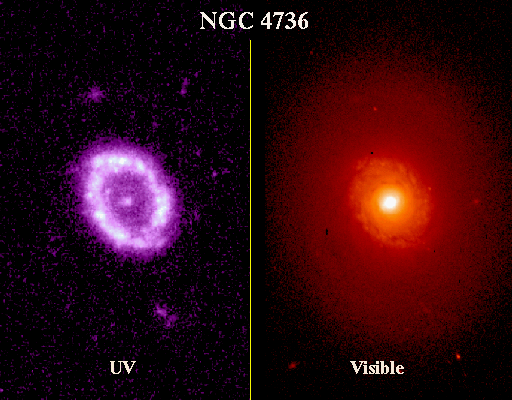Robert West O'Connell
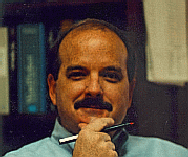
|
|
Brief Curriculum Vitae:
- Birthplace: San Francisco, 1943.
- AB, Astronomy, University of California, Berkeley, 1964.
- Ph.D., Astronomy & Physics, California Institute of Technology, 1970.
- Postdoctoral Fellow, Lick Observatory, U.C. Santa Cruz, 1969-71.
- Faculty Member, Department of Astronomy, University of Virginia, 1971-- .
- Department Chair, 1979-85, 1988-89, 1995-99.
- Chair, Starlab International Joint Science Working Group, 1980-82.
- Co-Investigator, ASTRO/Ultraviolet Imaging Telescope, 1980-98.
- John Downman Hamilton Professor, 1996-2014.
- Chair, Scientific Oversight Committee, Hubble Space Telescope Wide Field Camera 3, 1998-2010.
- Vice President, American Astronomical Society, 2006-2009.
- Co-Investigator, APOGEE/Sloan Digital Sky Survey III & IV, 2007-2020.
- John Downman Hamilton Professor Emeritus, 2014.
- Full Curriculum Vitae
- Publications List
Courses Taught (links include lecture notes & supporting materials):
- Astronomy 1210: Introduction to the Sky & Solar System
- Astronomy 1230: Introduction to Astronomical Observations
- Astronomy 5110: Observational Techniques
- Astronomy 5390: Stellar Populations
- Astronomy 8500: Professional Development for Astronomy Graduate Students
Interactive Data Language (IDL) Resources:
- Guide to Using IDL for Astronomers (O'Connell, 2012)
- IDL Tutorial/Exercises (O'Connell, 2012)
- Directory of UVa IDL Resources
Hubble Space Telescope Wide Field Camera 3
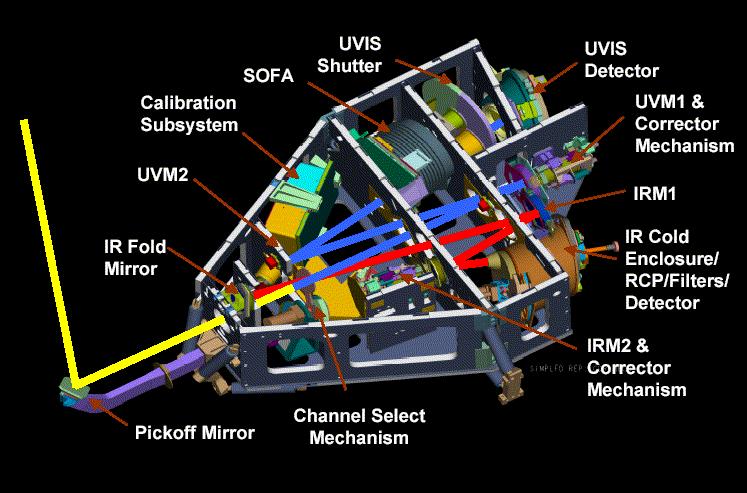
for the dual UV-visible and IR cameras (Click for enlargement) |
Background:
The Saga of Servicing Mission 4:
Centaurus A List of Publications from the SOC Early Release Science Programs: Other Sites:
|
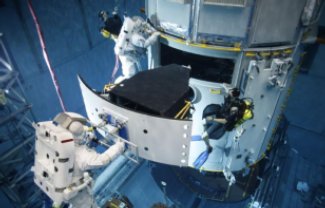
mock-up in Neutral Buoyancy Lab 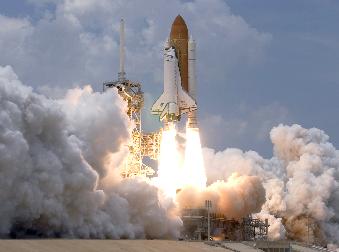

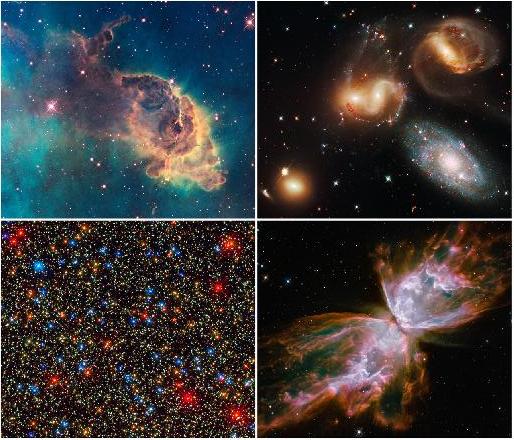

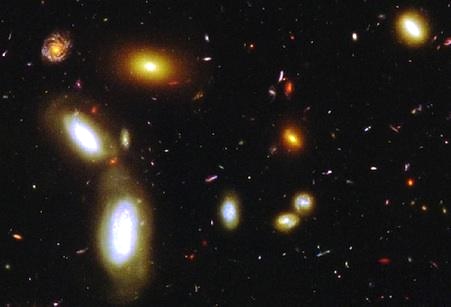
(Click for full view of field) |
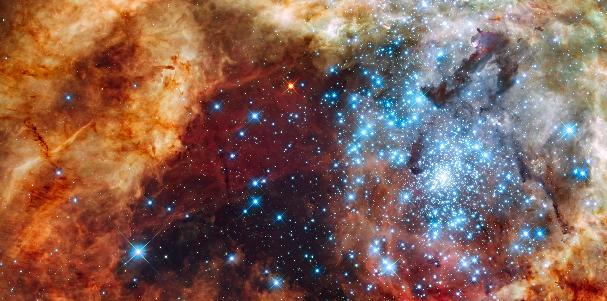
WFC3 Early Release Science Image
(Click for enlargement)
THE ULTRAVIOLET SKY AS SEEN BY UIT
 Click here for images from the Astro/UIT
missions. Click here for images from the Astro/UIT
missions.
|
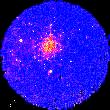
The Ultraviolet Imaging Telescope (UIT), one of the three ultraviolet telescopes of the Astro Observatory, flew on Space Shuttle missions in December 1990 and March 1995. It was a 38-cm telescope carrying two ultraviolet cameras with 40 arc-minute diameter fields of view (150 times larger than the field of the Hubble Space Telescope). The cameras employed image intensifiers with very strong long-wavelength rejection to provide pure UV images uncontaminated by visual or IR light. Resolution for point sources was typically 2.7 arc-seconds FWHM. During the two Astro missions, UIT returned a total of 1570 data frames of 250 different astronomical targets. UIT was designed and built at Goddard Space Flight Center by a group headed by Ted Stecher.
Click on the thumbnail at the upper right to see a sample UIT data frame from the Astro-1 mission. This is a far-ultraviolet (1500 Angstroms) image of the globular cluster Omega Centauri, one of the most massive in our Galaxy. Over 1900 stars are visible in the UIT image, most of them hotter than 10,000 degrees. These stars are over 11 billion years old. They have exhausted hydrogen in their cores and are now burning helium, just prior to collapsing toward the terminal white dwarf phase of evolution. Hundreds of thousands of cooler stars also reside in this cluster, but they are suppressed in the image because they emit very little UV light. Thus, the hot stars can be studied in isolation in these UV images. The field of view includes the entire cluster. The exposure was five minutes long. It was taken in full sunlight; but because the atmosphere above Shuttle altitude is so thin, and the sun is so dark in the far-ultraviolet, there is very little sky background on the frame.
The deep, wide-field UIT data for Omega Centauri allowed identification of hundreds of unusual, hot "extreme horizontal branch" stars as well as the discovery of a new class of stars now called "blue hook" stars. These are objects that are not massive enough to begin burning helium until they are compressed as they collapse toward the white dwarf stage. At that point they erupt in a "late flash" of helium burning.
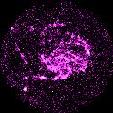
A sample UIT data frame from the Astro-2 mission can be viewed by clicking on the thumbnail at the right. This shows the face-on spiral galaxy Messier 101 in the far-ultraviolet. Again, the bright regions contain stars hotter than 10000 degrees; but in this case, they are mostly very young, massive objects. Many of them will end their lives in supernova explosions within 10 million years or so. Exposure time was 22 minutes at 1500 Angstroms. The field of view has been clipped to 29 arc-minutes across. M101 looks very different in the far-ultraviolet than in the optical/IR bands. Consequently, UV images like this are important for predicting the appearance of very distant normal galaxies, whose restframe UV is redshifted to longer (optical/IR) wavelengths. Click here to see a simulation of a high redshift galaxy based on this image.
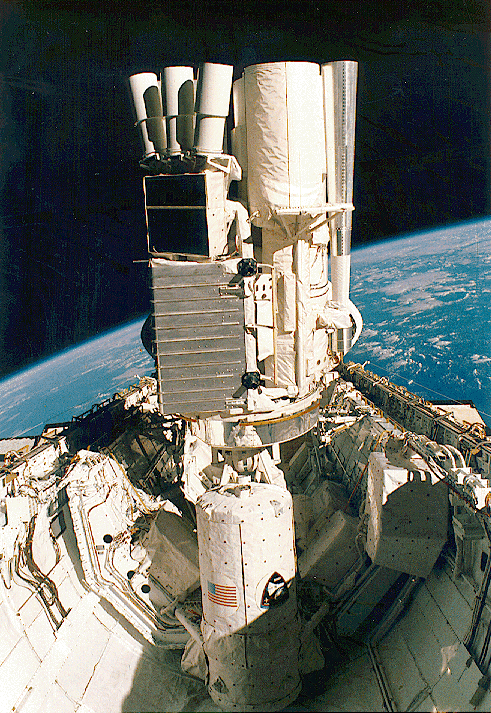
A general introduction to the Astro missions together with more instrument, flight, and science images and links to videos can be found here. Technical descriptions of UIT are given in Astrophysical Journal, vol. 395, page L1, 1992 and in Publ. Astron. Soc. Pacific, vol. 109, page 584, 1997. UIT data can be downloaded from the STScI Multimission Archive.
A list of publications based on UIT data can be found here.
A lecture (advanced undergraduate/graduate) on scientific goals, instrumental & technical considerations, and other missions in UV astronomy can be found here.
Alumni of the UVA/UIT group: Nicholas Collins, Brian McNamara, Michael Fanelli, Gregory Hennessy, Melanie Swain, Ben Dorman, Wesley Colley, Christoper Mullis, Jonathan Whitney, R. Brian Grant, Noella D'Cruz, Pamela Marcum, Raymond Ohl, Ronak Shah, Chris Palma, George Becker, Rolling Liu, Richard de Grijs.
Data analysis software for the UIT project was written mainly in IDL (the Interactive Data Language). Much of this is of general interest for analysis of astronomical and other data and is publicly available. IDL and Python are the best interactive computer languages available for computer-literate physical scientists. See my Guide to IDL for Astronomers, the IDL Astronomy User's Library, and the UVa IDL Resources Page for more information and lists of useful IDL links.
The GALEX Mission was a later (2003-2012) long-duration, free-flying UV telescope that investigated further many of the scientific topics explored by UIT. The UV telescope hardware from the Astro missions is being retrieved and refurbished by the Astro Restoration Project and will be placed on display at the US Space & Rocket Center in Huntsville, AL and later at the Smithsonian National Air and Space Museum.Selected Publications Since 1988
Spectral Synthesis in the Ultraviolet. II - Stellar Populations and Star Formation in Blue Compact Galaxies Fanelli, M. N., O'Connell, R. W., and Thuan, T. X., ApJ, 334, 665, 1988.
The Red Envelope and the Age of the Universe, O'Connell, R. W., in Towards Understanding Galaxies at Large Redshift, eds. R. Kron and A. Renzini (Dordrecht: Reidel), p.177, 1988. Abstract. Preprint (PDF).
Star Formation in Cooling Flows in Clusters of Galaxies, McNamara, B. R., and O'Connell, R. W., AJ, 98, 2018, 1989.
Spectral Synthesis in the Ultraviolet. IV: A Library of Standard Stellar Groups, Fanelli, M. N., O'Connell, R. W., Burstein, D., and Wu, C.-C., ApJSupp, 82, 197, 1992. Data Set (ADC format).
Ultraviolet Imaging of Old Populations in Nearby Galaxies,O'Connell, R. W., Bohlin, R. C., Collins, N. R., Cornett, R. H., Hill, J. K., Hill, R. S., Landsman, W. B., Roberts, M. S., Smith, A. M., and Stecher, T. P., ApJLett, 395, L45, 1992.
Blue Lobe Galaxies in the Cooling Flow Clusters Abell 1795 and Abell 2597 McNamara, B. R., and O'Connell, R. W., AJ, 105, 417, 1993.
Far-Infrared Emission from the Intracluster Medium, Wise, M. W., O'Connell, R. W., Bregman, J. N., and Roberts, M. S., ApJ, 405, 94, 1993.
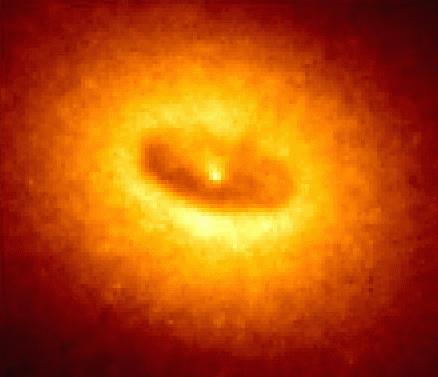
The Nuclear Disk of NGC 4261: Images and Spectroscopic Data, Jaffe, W., Ford, H., Ferrarese, L., van den Bosch, F., and O'Connell, R. W., Nature, 364, 213, 1993. Image.
Hubble Space Telescope Imaging of Super Star Clusters in NGC 1569 and NGC 1705, O'Connell, R. W., Gallagher, J. S., and Hunter, D. A., ApJ, 433, 65, 1994. 1569 image. 1569 cluster A image.
The Ages of Elliptical Galaxies O'Connell, R. W., in Nuclei of Normal Galaxies: Lessons from the Galactic Center, eds. R. Genzel and A. I. Harris (Dordrecht: Kluwer), 255, 1994. Preprint (PDF).
Far Ultraviolet Photometry of the Globular Cluster Omega Centauri. Whitney, J. H., O'Connell, R. W., Rood, R. T., Dorman, B., Landsman, W. B., Bohlin, R. C., Cheng, K.-P., Hintzen, P., Roberts, M. S., Smith, A. M., Smith, E. P., and Stecher, T. P., AJ, 108, 1350, 1994. Image.
Ultraviolet Radiation from Evolved Stellar Populations II. The Ultraviolet Upturn Phenomenon in Elliptical Galaxies, Dorman, B., O'Connell, R. W., and Rood, R. T., ApJ, 442, 105, 1995.
Hubble Space Telescope Imaging of Super Star Clusters in M82, O'Connell, R. W., Gallagher, J. S., Hunter, D. A., and Colley, W. N., ApJLett, 446, L1, 1995. Image.
An Overview of Spectral Synthesis of Stellar Populations, O'Connell, R. W., in From Stars to Galaxies: The Impact of Stellar Physics on Galaxy Evolution, eds. C. Leitherer, U. Fritze-von Alvensleben, and J. Huchra, p. 3, 1996. Preprint (PDF).
Optical, Radio, and X-Ray Structure in NGC 1275, McNamara, B. R., O'Connell, R. W., and Sarazin, C. L. AJ, 112, 91, 1996. Original versions of greyscale figures.
The Origin of Extreme Horizontal Branch Stars D'Cruz, N. L., Dorman, B., Rood, R. T., and O'Connell, R. W., ApJ, 466, 359, 1996.
The Star Formation History of Low Redshift Spiral Galaxies, O'Connell, R. W., in Star Formation, Near and Far, eds. S. S. Holt and L. G. Mundy (AIP Press), p. 491, 1997. Preprint (PDF).
Far-Ultraviolet Color Gradients in Early-Type Galaxies, Ohl, R. G., O'Connell, R. W., Bohlin, R. C., Collins, N. R., Dorman, B., Fanelli, M. N., Neff, S. G., Roberts, M. S., Smith, A. M., and Stecher, T. P., ApJLett, 505, L11, 1998.
Far-Ultraviolet Radiation From Elliptical Galaxies, O'Connell, R. W., Ann. Rev. Astr. Ap., 37, 603, 1999.
Stellar Populations at Large Redshifts: Updated Review, O'Connell, R. W. in Stellar Populations (IAU Symposium No. 164), eds. P. van der Kruit and G. Gilmore, Ap&SS, 267, 329, 1999. Preprint.
Energy Distributions and the Formation Times of Spheroidal Populations, O'Connell, R. W., in Building the Galaxies: From the Primordial Universe to the Present (XIXth Moriond Astrophysics Conference), eds. F. Hammer, T. X. Thuan, V. Cayatte, B. Guiderdoni, and J. T. T. Van (Paris: Editions Frontieres), p. 3, 2000. Preprint (PDF).
HST Observations of New Horizontal Branch Structures in the Globular Cluster Omega Centauri, D'Cruz, N. L., O'Connell, R. W., Rood, R. T., Whitney, J. H., Dorman, B., Landsman, W. B., Stecher, T. P., and Bohlin, R. C., ApJ, 530, 352, 2000.
Supernova Remnants in the Fossil Starburst in M82,, de Grijs, R., O'Connell, R. W., Becker, G. D., Chevalier, R. A., and Gallagher, J. S., AJ, 119, 681, 2000.
Comparing Galaxy Morphology at Ultraviolet and Optical Wavelengths, Kuchinski, L. E., Freedman, W. L., Madore, B. F., Trewhella, M., Bohlin, R. C., Cornett, R. H., Fanelli, M. N., Marcum, P. M., Neff, S. G., O'Connell, R. W., Roberts, M. S., Smith, A. M., Stecher, T. P., and Waller, W. H., ApJ Suppl, 131, 441, 2000.
An Ultraviolet/Optical Atlas of Bright Galaxies, Marcum, P. M., et al., ApJ Suppl, 132, 129, 2001.
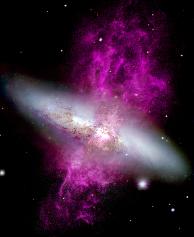
The Fossil Starburst in M82, de Grijs, R., O'Connell, R. W., and Gallagher, J. S., III, AJ, 121, 768, 2001. STScI press release.
Age and Abundance Discrimination in Old Stellar Populations Using Mid-Ultraviolet Colors, Dorman, B., O'Connell, R. W., and Rood, R. T., ApJ, 591, 878, 2003.
Conference Summary: Ten Years of Super Star Cluster Research, O'Connell, R. W., in The Formation and Evolution of Massive Young Star Clusters, eds. H. Lamers, A. Nota and L. Smith (San Francisco: ASP), p. 551, 2004. Preprint.
Conference Summary: Starbursts and Galaxy Evolution, O'Connell, R. W., in Starbursts: From 30 Dor to Lyman Break Galaxies, eds. R. de Grijs & R. M. Gonzalez Delgado (Dordrecht: Kluwer), p. 333, 2005. Preprint.
Hot Populations in M87 Globular Clusters, Sohn, S. T., O'Connell, R. W., Kundu, A., Landsman, W. B., Burstein, D., Bohlin, R., Frogel, J. A., and Rose, J. A., AJ, 131, 866, 2006.
HST/STIS Optical Spectroscopy of Five Super Star Clusters in the Starburst Galaxy M82, Smith, L. J., Westmoquette, M. S., Gallagher, J. S., O'Connell, R. W., Rosario, D. J., and de Grijs, R., MNRAS, 370, 513, 2006.
Facts of Life for New Teachers in the Astronomy Non-Majors Curriculum, O'Connell, R. W., Astron. Education Review, 6, 114, 2007. Lecture version (PDF).
Wide Field Camera 3: A Powerful New Imager for the Hubble Space Telescope, Kimble, R. A., MacKenty, J. W., O'Connell, R. W., and Townsend, J. A., Proc. SPIE, Vol. 7010, 70101E, 2008.
The Aztec Calendar Stone, O'Connell, R. W., and Tegtmeyer, V. L., in The Encyclopedia of Latin American History and Culture, (New York: Macmillan), 2008. PDF version.
The Luminosity, Mass, and Age Distributions of Compact Star Clusters in M83 Based on Hubble Space Telescope/Wide Field Camera 3 Observations, Chandar, R., Whitmore, B. C., Kim, H., Kaleida, C., Mutchler, M., Calzetti, D., Saha, A., O'Connell, R., Balick, B., Bond, H., Carollo, M., Disney, M., Dopita, M. A., Frogel, J. A., Hall, D., Holtzman, J. A., Kimble, R. A., McCarthy, P., Paresce, F., Silk, J., Trauger, J., Walker, A. R., Windhorst, R. A., and Young, E., ApJ, 719, 966, 2010.
Anatomy of a Post-starburst Minor Merger: A Multi-wavelength WFC3 Study of NGC 4150, Crockett, R. M., et al., ApJ, 727, 115, 2011.
The Hubble Space Telescope Wide Field Camera 3 Early Release Science Data: Panchromatic Faint Object Counts for 0.2-2um Wavelength, Windhorst, R A., et al., ApJS, 193, #27, 2011.
Star Formation in 30 Doradus, De Marchi, G., et al., ApJ, 739, #27, 2011.
Ultraviolet Properties of Galactic Globular Clusters with GALEX. I. The Color-Magnitude Diagrams, Schiavon, R. P., Dallessandro, E., Sohn, S. T., Rood, R. T., O'Connell, R. W., Ferraro, F. R., Lanzoni, B., Beccari, G., Rey, S.-C., Rhee, J., Rich, R. M., Yoon, S.-J., and Lee, Y.-W., AJ, 143, #121, 2012.
Newborn Spheroids at High Redshift: When and How Did the Dominant, Old Stars in Today's Massive Galaxies Form?, Kaviraj, S., Cohen, S., Ellis, R. S., Peirani, S., Windhorst, R. A., O'Connell, R. W., Silk, J., Whitmore, B. C., Hathi, N. P., Ryan, R. E., Dopita, M. A., Frogel, J. A., and Dekel, A., MNRAS, 428, 925, 2013.
Conference Summary: The Once and Future World of UV Astronomy, O'Connell, R. W., from the European Southern Observatory meeting on Challenges in UV Astronomy (Garching, Germany), 2013. PDF presentation.
Tracing Chemical Evolution over the Extent of the Milky Way's Disk with APOGEE Red Clump Stars, Nidever, D. L., et al., ApJ, 796, #38, 2014.
Filamentary Star Formation in NGC 1275, Canning, R. E. A., Ryon, J. E., Gallagher, J. S., Kotulla, R., O'Connell, R. W., Fabian, A. C., Johnstone, R. M., Conselice, C. J., Hicks, A., Rosario, D., and Wyse, R. F. G., MNRAS, 444, 336, 2014.
Chemical Cartography with APOGEE: Metallicity Distribution Functions and the Chemical Structure of the Milky Way Disk, Hayden, M. R., et al., ApJ, 808, #132, 2015.
ALMA Observations of Cold Molecular Gas Filaments Trailing Rising Radio Bubbles in PKS 0745-191, Russell, H. R. et al., MNRAS, 458, 3134, 2016.
Chemical Tagging With APOGEE: Discovery of a Large Population of N-rich Stars in the Inner Galaxy, Schiavon, R. P., et al., MNRAS, 465, 501, 2017.
Lyman Continuum Escape Fraction of Faint Galaxies at z 3.3 in the CANDELS/GOODS-North, EGS, and COSMOS Fields with LBC, Grazian, A., et al., A&A, 602, A18, 2017.
FIGS—Faint Infrared Grism Survey: Description and Data Reduction, Pirzkal, N., et al., ApJ, 846, 384, 2017.
The Origin of Accreted Stellar Halo Populations in the Milky Way Using APOGEE, Gaia, and the EAGLE Simulations, Mackereth, J., et al., MNRAS, 482, 3426, 2019.
Evidence From APOGEE for the Presence of a Major Building Block of the Halo Buried in the Inner Galaxy, Horta, D., et al., MNRAS, 500, 1385, 2021.
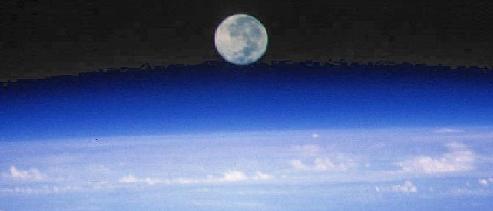
 Back to UVa Astronomy Home Page
Back to UVa Astronomy Home Page
